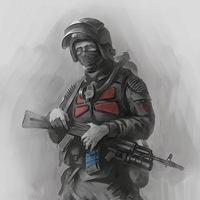
Какие европейские обычаи ввел петр1 в России?
 0
0
 0
0
Ответы на вопрос
 Внимание! Ответы на вопросы дают живые люди. Они могут содержать ошибочную информацию, заблуждения, а также ответы могут быть сгенерированы нейросетями. Будьте внимательны. Если вы уверены, что ответ неверный, нажмите кнопку "Пожаловаться" под ответом.
Внимание! Ответы на вопросы дают живые люди. Они могут содержать ошибочную информацию, заблуждения, а также ответы могут быть сгенерированы нейросетями. Будьте внимательны. Если вы уверены, что ответ неверный, нажмите кнопку "Пожаловаться" под ответом.

 0
0
 0
0

European Customs Introduced by Peter the Great in Russia
Peter the Great, the Tsar of Russia from 1682 to 1725, implemented several European customs and reforms in Russia. These changes were part of his efforts to modernize and westernize the country. Here are some of the European customs introduced by Peter the Great in Russia:
1. Western Clothing and Fashion: Peter the Great encouraged Russians to adopt Western clothing styles. He himself often wore European-style clothing and encouraged the nobility to do the same. He even imposed a tax on beards to encourage men to shave and adopt a more Western appearance.
2. European Hairstyles: Peter the Great introduced European hairstyles, such as short haircuts, in Russia. He even established a "beard tax" to discourage the wearing of long beards, as it was considered unfashionable in Europe at the time.
3. European Table Manners: Peter the Great introduced European table manners and etiquette in Russia. He established rules for dining, including the use of forks, knives, and spoons, as well as the order of serving dishes. These changes aimed to align Russian dining customs with those of Western Europe.
4. European Architecture: Peter the Great brought European architects to Russia to design and construct buildings in the European style. He established the city of St. Petersburg, which was designed to resemble European cities like Amsterdam and Venice. The city's architecture, including its palaces and canals, reflected European influences.
5. European Education and Science: Peter the Great established the first Russian universities and academies, modeled after European educational institutions. He invited European scholars and scientists to Russia to teach and conduct research. This helped to promote the study of European languages, sciences, and arts in the country.
6. European Military Reforms: Peter the Great implemented significant military reforms based on European models. He modernized the Russian army, introducing European military tactics, uniforms, and training methods. He also established the Russian Navy and built a strong fleet, taking inspiration from European naval powers.
7. European Customs and Social Practices: Peter the Great introduced various European customs and social practices in Russia. For example, he encouraged the adoption of European-style dances, such as the minuet and quadrille, at Russian social gatherings. He also promoted the use of European languages, particularly French, in the Russian court and among the nobility.
It is important to note that while Peter the Great introduced many European customs and reforms in Russia, not all of them were universally accepted or embraced by the Russian population. Some traditionalists resisted these changes, and the process of Westernization continued even after Peter's reign.
Overall, Peter the Great's efforts to introduce European customs and reforms in Russia played a significant role in shaping the country's cultural, social, and political landscape, and they laid the foundation for future modernization efforts in Russia.
 0
0
 0
0
Топ вопросов за вчера в категории История
Последние заданные вопросы в категории История
-
Математика
-
Литература
-
Алгебра
-
Русский язык
-
Геометрия
-
Английский язык
-
Химия
-
Физика
-
Биология
-
Другие предметы
-
История
-
Обществознание
-
Окружающий мир
-
География
-
Українська мова
-
Информатика
-
Українська література
-
Қазақ тiлi
-
Экономика
-
Музыка
-
Право
-
Беларуская мова
-
Французский язык
-
Немецкий язык
-
МХК
-
ОБЖ
-
Психология
-
Физкультура и спорт
-
Астрономия
-
Кыргыз тили
-
Оʻzbek tili




















